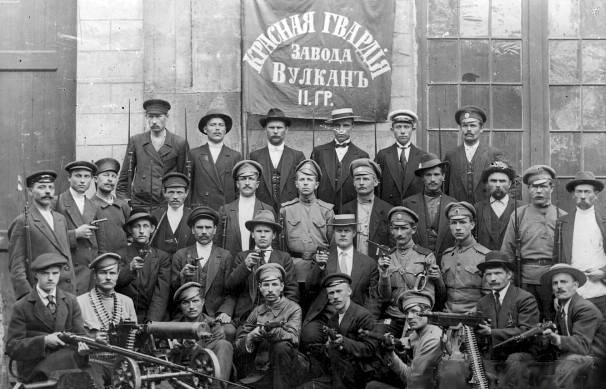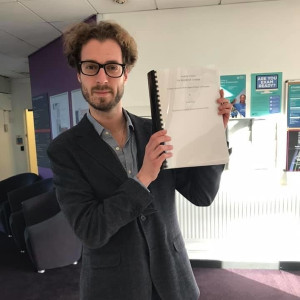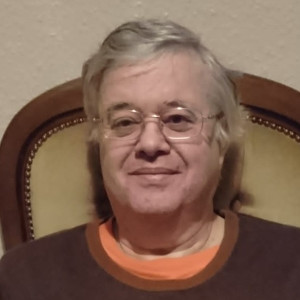Chapters
Our title concerns a pair of revolutions, one early in 1917 and the other toward the end of the year, for the same causes: the country’s political leadership and economic stability.
The events are difficult to narrate in a linear fashion because, often, the causes and effects themselves are not linear, to say nothing of the fact that dating the events is challenging for the different calendars used at the time.
Furthermore, the terminology used has a different meaning in Russian than in their English interpretation.
Twentieth-century Russia is a modern world depth study offered for GCSE History with all three exam boards, AQA, OCR and Edexcel. Here are some revision notes to help explain the all-important Russian Revolution. It’s a good time to look at the impact of the First World War too, with the centenary being marked this year.
The March Revolution (also known as the February Revolution) in 1917 resulted in the end of the Romanov Dynasty in Russia. But why did this happen? Historians love to have a good debate so ‘how far the impact of the First World War contributed to the revolution’ is often discussed. As you discover more and more about this topic, you might develop your own opinion on it too. So, what actually happened to Russia during the war?
The brutal revolution put an end to centuries of Russian Imperial power. The Bolsheviks, under the leadership of Marxist revolutionary Vladimir Lenin, overthrew the czarist tradition during the Russian Revolution. Later, the Bolsheviks would evolve into the Soviet Union's Communist Party.
For these reasons and others, we start our dissertation on these historical events with a glossary; a roadmap of sorts to help navigate the remains of what was, fundamentally, an impressive struggle. These struggles help define what happened in Russia during the Second World War.

The Russian Revolution: Terms and Conditions

First, we’ll settle the calendar issue: Julian versus Gregorian?
The Gregorian calendar presents a much more even breakdown of the months; all save February have either 30 or 31 days.
The Julian calendar, on the other hand, alternates between 29 and 31 days and February presents its own leap year variations; that month might have 23 or 24 days.
Currently and at the time of the Russian Revolution, the Julian calendar runs 13 days behind the Gregorian calendar.
That discrepancy could lead to some confusion over the sequence of events. That is why historians denote any data relating to Russian history with either O.S. or N.S. to indicate which calendar should be consulted when considering exactly what happened and when.
We will follow that protocol in this text.
Architects of the Revolution
These are the principal engineers of the Russian Revolution:
-
Karl Marx: philosopher and political theorist whose writings inspired Lenin, among others
-
Vladimir Lenin: leader of the Bolsheviks and creator of the Marxist-Leninist political ideology
-
Leon Trotsky: Marxist and Bolshevik, though as the revolution was gaining traction, he was a Menshevik
-
Julius Martov: a Menshevik who stirred Lenin’s ire by suggesting peace with Germany
-
it was his writings that formed the basis of Trotsky’s manifesto
-
-
Grigory Zinoviev: a staunch supporter of Lenin, he was, along with Trotsky and Stalin, one of the seven original members of the Politburo.
To this illustrious list, we should add Nicolai Ruzsky, the army general who forced Tsar Nicholas’ abdication.
Of course, we all know that Tsar Nicholas was the last Russian emperor and his abdication signalled the end of the Romanov dynasty.
His role in the revolution is our starting point, now that we have all of the groundwork laid.
During the war, living conditions were atrocious, particularly in Petrograd and Moscow. There was a severe supply shortage. The railway had almost completely collapsed by 1917, leaving food supplies rotting in stranded carriages, making food and fuel extremely scarce.

The First 1917 Russian Revolution
No event in history is freestanding: there are always causes leading up to and fallout – be it social, political, economic or a combination of all three.
Your history exam on Russian GCSE will ask what happened in the February revolution...
Russia’s February Revolution (March 1917 N.S.) was instigated by the 1905 Revolution and the root cause of both actions was Tsar Nicholas II.
The crux of the 1905 event was Bloody Sunday, when the palace imperial guards fired upon unarmed factory workers approaching the Winter Palace to submit a petition for their emperor to intercede on their behalf.
They were asking for better working conditions but were murdered instead!
This incident had several effects; among others, it served to deepen social unrest and distrust of the Tsar, as well as to stir up political fervour.
It is important to note that the Tsar was not in residence at the time.
He had been informed of the workers’ demonstration and ordered troop reinforcements to the palace ahead of their arrival. He did not command the palace guards to open fire on the supplicants; nevertheless, he was blamed for the massacre.
This incident cemented the idea that Nicholas II was at least cowardly if not ineffective, a sentiment carried through the world war, especially as Russia suffered staggering losses.
During World War I, Russia herself was in turmoil, not only for the casualties sustained in battle but because, on the home front, people were starving – and the Tsar was to blame!
Flash forward now to 1917...
The Tsar had been overseeing the front lines of the war for two years.
As the socio-economic crisis deepened in Petrograd, the State Duma advised their emperor to establish a constitutional monarchy, at least to see the country through this period of unrest. He ignored the advice and any bit of loyalty to him that the people may have harboured evaporated.
Further demonstrations led to more bloodshed, with police firing on demonstrators... before siding with their cause and actually joining them. Other regiments, some in the city on the Tsar’s orders, also mutinied.
On March 15, 1917 (N.S.), Tsar Nicholas II abdicated, naming his brother, Michael, to the throne. Wisely, the Duke deferred ascension until the people could vote on whether to continue the monarchy or institute a government by the constitutional assembly.
That move, while lauded, left a vacuum in the country’s governance: leadership was up for grabs.
The same could not be said for the American colonies; they resented England's leadership, which led to the American Revolution.

The Russian Military
The Russian military was not very effective. Despite having the largest army of any participating nation in the conflict, Russia's force was only half as large as that of France and Germany in terms of population.
With 6.5 million soldiers and only 4.6 million firearms, the Russian army was also not well-equipped. Therefore, it comes as a little surprise that the army suffered significant setbacks in 1914–15 and that, by 1915, 4 million Russians had been dead, injured, or taken prisoner. As you may imagine, the Russian populace was becoming quite dissatisfied.
So, in 1915, Tsar Nicholas II made the decision to lead the troops from the front lines. However, this meant that the Tsar was now directly in charge of the army, and as a result, any shortcomings of the Russian military would be linked to his shortcomings as a leader. Nicholas made a bad choice!
By 1916, more than half of the soldiers remained in the urban barracks as fewer and fewer soldiers were willing to fight at the front. As the public began to hold Nicholas more and more responsible for Russia's failings, Nicholas began to lose the loyalty of both his military and the general populace.

The Interim Months and The Bolshevik Revolution
Upon Duke Michael’s deferment of the crown, the Duma maintained the hastily formed provisional government, but it catered mainly to the wishes of the aristocracy.
In other words: the people still had no champion at the national level and no relief from the hardships of daily life.
Unlike their former enemy, where a certain Herr Hitler would become the people's champion in Nazi Germany.
The socialist Soviets worked hard on behalf of the people and even earned the loyalty of left-leaning urbanites, but they were under constant pressure from the Bolsheviks, who were seeking a road into – or, at least a way of swaying the Duma to their agenda.
Lenin led the movement that demanded an immediate cessation of hostilities with Germany, an end to serfdom – those who worked the land should have ownership of it, and an adequate food supply for all.
The government wanted to continue fighting the war, which gave the Bolsheviks all the justification they could have hoped for to escalate their revolutionary tactics.
On November 7th, 1917 (N.S.) The Red Guards, as they were called, violently overthrew the provisional government and rendered all political power onto the Soviets, with the Bolsheviks as the supreme reigning political party.
Also discover the pivotal political events brought about by the Battle of Waterloo...
The Aftermath of the Russian Revolution
The Bolsheviks, led by Lenin, moved the seat of the national government to Moscow where, in one of its first official acts, it drafted and signed the Treaty of Brest-Litvosk with Germany (March 1918), thus ending their involvement in the First World War.
Making good on that promise earned the Bolsheviks a lot of goodwill and faith from their war-weary constituents.
Unfortunately, one treaty does not make peace on all fronts. Several political factions within Russia were dissatisfied with Bolshevik rule.
The Whites were counter-revolutionaries who rather wanted the bourgeois system to be reinstated. The non-Bolshevik socialists resented all of the power the Bolsheviks accorded themselves in the Brest-Litvosk treaty.
And then, there were independent movements espousing the breakup of the nation into smaller nation-states, out from under Bolshevik control.
The Bolsheviks and their Red Army – formerly the Red Guard, by now well-regimented and well-equipped, were able to put down all of these skirmishes, rebranding themselves as the Communist party.
Their withdrawal from the world stage into communism served to shield the country from the ravages brought on by the Great Depression.
What happened with Tsar Nicholas and his family?
After being refused exile in England, where Nicholas believed he might find a sympathetic royal court, he and his family were relocated several times; the last move being to Yekaterinburg.
Around 2:00 in the morning on July 17th, 1918, the entire family was awakened, given time to dress, ushered into the basement of their residence and executed.
Historians cannot seem to agree on who gave the actual order for this tragedy but Lenin is strongly thought to have commanded it.
Now discover more earth-shattering events that changed our world's political and economic landscape.















